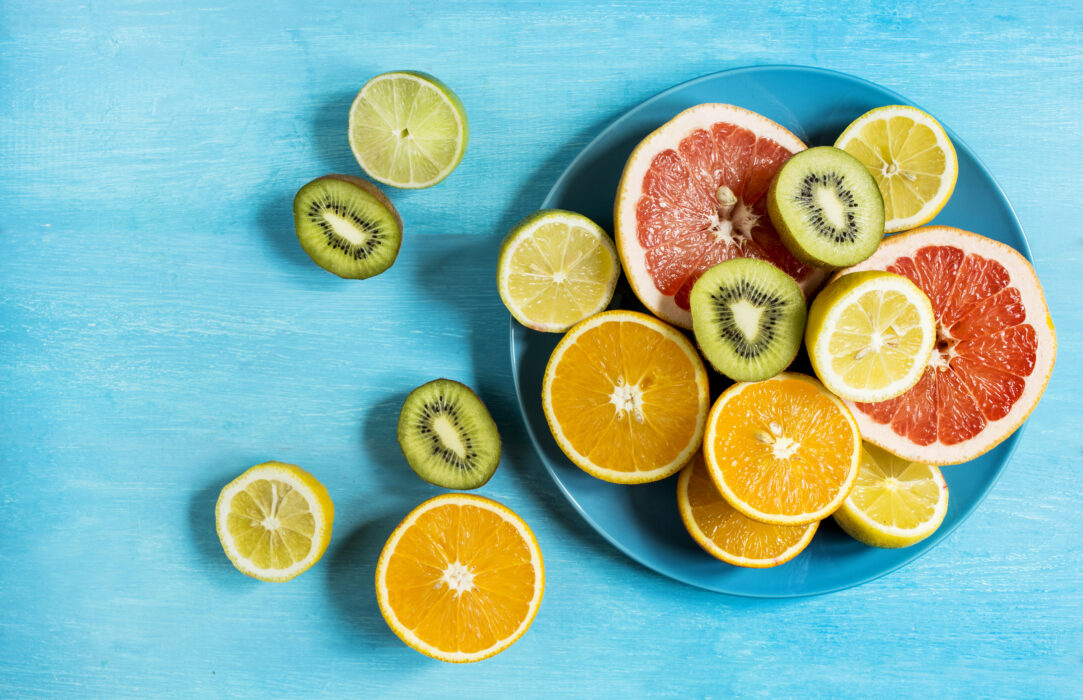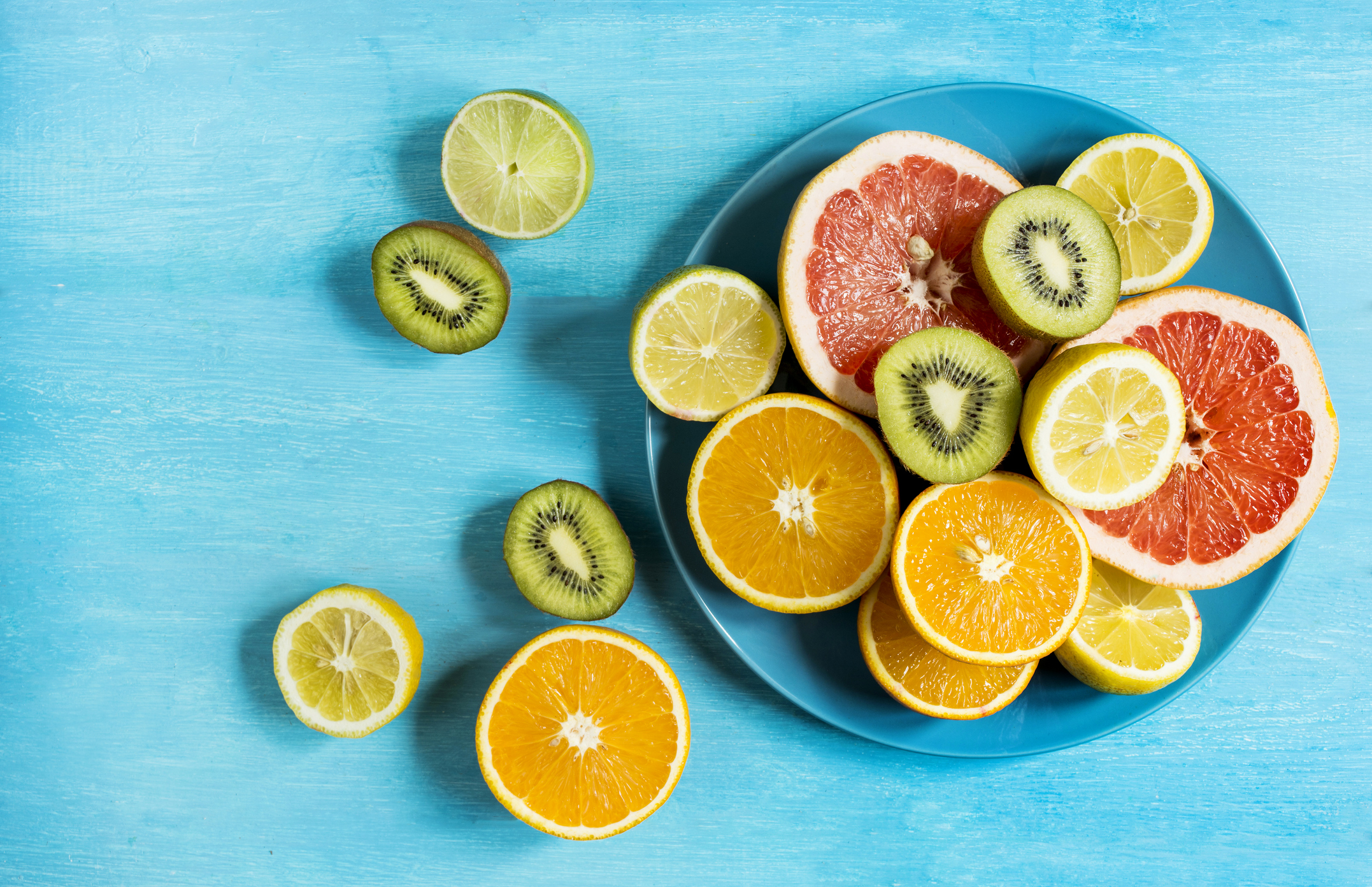
Foods that really do support your immune system (backed by science)
Foods that really do support your immune system (backed by science)

As winter approaches, you should be thinking about how to prepare your immune system against chills and ills. After all, it’s much easier to prevent illness than it is to treat it.
Your immune system requires significant energy and nutritional resources to support its many activities in defending your body from invading pathogens. Research suggests that a deficiency in just one nutrient can significantly impact the immune response.[1] Vitamins A, B6, B9, C, D, and E and minerals zinc, selenium, iron, and copper all play key roles in supporting the growth and activity of immune cells, protecting them from oxidative stress, and producing antibodies.[2]
While supplements are a great way to fill in any gaps, many everyday foods can also provide these vital nutrients. It’s just a matter of adding them to your diet!
Here are a few of the best immune-boosting foods, according to science.
Citrus fruits
Oranges, lemons, grapefruit, tangerines, and limes are rich sources of Vitamin C, which supports both innate and adaptive immune function. Vitamin C also helps to strengthen the epithelial barrier function against infections and promotes the development of white blood cells that fight infection.[3] Citrus fruits also provide folate (vitamin B9), which supports the function of phagocytes, natural killer cells, T-cells and B-cells.[4]
Bioactive polyphenols from citrus juices include hesperidin, narirutin and naringin, which help to reduce inflammation and speed recovery from illness.[5]
Kiwifruit
Along with vitamins A, C, and folate, kiwifruit contains the carotenoids lutein and zeaxanthin, which harbour important antiviral properties and help to stimulate the immune system.[6] Kiwifruit also contains the unique plant defense protein kiwellin, which can act as an antimicrobial agent.[7]
One study even found that kiwifruit’s ability to reduce several biomarkers of oxidative stress and stimulate an immune response helped reduce the incidence and severity of symptoms of upper respiratory tract infections. The researchers even suggested that eating kiwifruit may be more beneficial than supplementation with vitamin C alone.[8]
Mushrooms
Mushrooms such as Reishi, Shiitake and Chaga have been used for centuries to support immune health. The immunomodulatory properties of these species include beta-D-glucans, a group of polysaccharopeptides that are recognised by receptors of immune cells and trigger an immune response, activating several immune cells, including lymphocytes, macrophages, and natural killer cells.[9]
Garlic
Garlic delivers a range of immune-boosting vitamins and minerals, including A, C, E, B vitamins, zinc, and magnesium. Garlic’s characteristic odour and taste are thanks to its organosulfur compounds, which also contribute to its health benefits.[10] One of these is allicin, a potent antimicrobial substance released when garlic is crushed. Adding just 5g of raw mashed garlic to a single meal has been shown to activate important genes related to immune function, stimulating a healthy immune response.[11]
Unsweetened yoghurt
Yoghurt is one of the most readily available food sources of beneficial lactic acid bacteria, Lactobacillus and Bifidobacterium. These probiotics can interact with certain viruses and produce substances that support antiviral defenses. They also inhibit specific signalling pathways involved in inflammation.[12] A 2023 study found that people with the flu (influenza H1N1) who ate yoghurt daily developed higher levels of antiviral molecules and had more efficient immune regulation. The yoghurt consumption also reduced pro-inflammatory signals that are often elevated during severe infection, which can contribute to tissue damage.[13]
Manuka honey
Native to New Zealand, Manuka honey is prized around the world for its powerful antibacterial properties. As a ‘natural antibiotic’, manuka honey inhibits the growth of various bacteria and also helps to stimulate cytokines, the signalling proteins that activate a response to pathogens or other foreign substances that enter the body.[14] It also stimulates macrophages to release mediators needed for tissue healing and increases the recruitment of neutrophils, which help direct immune cells to the site of infection and support tissue healing.[15] Research also suggests that manuka honey works alongside conventional antibiotics, enhancing their effectiveness against resistant strains.[16]
Leafy greens
Spinach, kale, asparagus, broccoli, Brussels sprouts, watercress, and other leafy greens are rich sources of vitamin C and folate, both of which help produce and maintain white blood cells that defend the body against infection.[17] Folate plays a role in regulating inflammation and the production of pro-inflammatory cytokines.[18]
Chlorophyll, the main pigment of leafy green vegetables, helps to protect immune cells by reducing oxidative stress and cell death. It also helps to increase numbers of immune cells, including T cells, B cells, and macrophages, and enhance their activity.[19]
Remember: a healthy immune system isn’t just about avoiding infection. It’s also about reducing the severity of your symptoms and recovering faster. A wholesome, balanced diet is the foundation of winter wellness – and year-round health.
This information is provided for educational purposes only and is not a substitute for professional medical advice. Always seek the guidance of your physician or qualified healthcare provider with any questions you may have regarding your health or a medical condition.
References
[1] Cooper, E. L., & Ma, M. J. (2017). Understanding nutrition and immunity in disease management. Journal of traditional and complementary medicine, 7(4), 386–391. https://doi.org/10.1016/j.jtcme.2016.12.002
[2] Gombart, A. F., Pierre, A., & Maggini, S. (2020). A Review of Micronutrients and the Immune System-Working in Harmony to Reduce the Risk of Infection. Nutrients, 12(1), 236. https://doi.org/10.3390/nu12010236
[3] Fisher, B. J., Kraskauskas, D., Martin, E. J., Farkas, D., Wegelin, J. A., Brophy, D., Ward, K. R., Voelkel, N. F., Fowler, A. A., 3rd, & Natarajan, R. (2012). Mechanisms of attenuation of abdominal sepsis induced acute lung injury by ascorbic acid. American journal of physiology. Lung cellular and molecular physiology, 303(1), L20–L32. https://doi.org/10.1152/ajplung.00300.2011
[4] Miles, E. A., & Calder, P. C. (2021). Effects of Citrus Fruit Juices and Their Bioactive Components on Inflammation and Immunity: A Narrative Review. Frontiers in immunology, 12, 712608. https://doi.org/10.3389/fimmu.2021.712608
[5] Miles, E. A., & Calder, P. C. (2021). Effects of Citrus Fruit Juices and Their Bioactive Components on Inflammation and Immunity: A Narrative Review. Frontiers in immunology, 12, 712608. https://doi.org/10.3389/fimmu.2021.712608
[6] Mrowicka, M., Mrowicki, J., Kucharska, E., & Majsterek, I. (2022). Lutein and Zeaxanthin and Their Roles in Age-Related Macular Degeneration-Neurodegenerative Disease. Nutrients, 14(4), 827. https://doi.org/10.3390/nu14040827
[7] Richardson, D. P., Ansell, J., & Drummond, L. N. (2018). The nutritional and health attributes of kiwifruit: a review. European journal of nutrition, 57(8), 2659–2676. https://doi.org/10.1007/s00394-018-1627-z
[8] Skinner, M. A., Bentley-Hewitt, K., Rosendale, D., Naoko, S., & Pernthaner, A. (2013). Effects of kiwifruit on innate and adaptive immunity and symptoms of upper respiratory tract infections. Advances in food and nutrition research, 68, 301–320. https://doi.org/10.1016/B978-0-12-394294-4.00017-1
[9] Lull, C., Wichers, H. J., & Savelkoul, H. F. (2005). Antiinflammatory and immunomodulating properties of fungal metabolites. Mediators of inflammation, 2005(2), 63–80. https://doi.org/10.1155/MI.2005.63
[10] Melguizo-Rodríguez, L., García-Recio, E., Ruiz, C., De Luna-Bertos, E., Illescas-Montes, R., & Costela-Ruiz, V. J. (2022). Biological properties and therapeutic applications of garlic and its components. Food & function, 13(5), 2415–2426. https://doi.org/10.1039/d1fo03180e
[11] Charron, C. S., Dawson, H. D., Albaugh, G. P., Solverson, P. M., Vinyard, B. T., Solano-Aguilar, G. I., Molokin, A., & Novotny, J. A. (2015). A Single Meal Containing Raw, Crushed Garlic Influences Expression of Immunity- and Cancer-Related Genes in Whole Blood of Humans. The Journal of nutrition, 145(11), 2448–2455. https://doi.org/10.3945/jn.115.215392
[12] Patra, S., Saxena, S., Sahu, N., Pradhan, B., & Roychowdhury, A. (2021). Systematic Network and Meta-analysis on the Antiviral Mechanisms of Probiotics: A Preventive and Treatment Strategy to Mitigate SARS-CoV-2 Infection. Probiotics and antimicrobial proteins, 13(4), 1138–1156. https://doi.org/10.1007/s12602-021-09748-w
[13] Jeon, H. Y., Kim, K. S., & Kim, S. (2023). Effects of yogurt containing probiotics on respiratory virus infections: Influenza H1N1 and SARS-CoV-2. Journal of dairy science, 106(3), 1549–1561. https://doi.org/10.3168/jds.2022-22198
[14] Minden-Birkenmaier, B. A., Meadows, M. B., Cherukuri, K., Smeltzer, M. P., Smith, R. A., Radic, M. Z., & Bowlin, G. L. (2019). The Effect of Manuka Honey on dHL-60 Cytokine, Chemokine, and Matrix-Degrading Enzyme Release under Inflammatory Conditions. Med one, 4(2), e190005. https://doi.org/10.20900/mo.20190005
[15] Johnston, M., McBride, M., Dahiya, D., Owusu-Apenten, R., & Nigam, P. S. (2018). Antibacterial activity of Manuka honey and its components: An overview. AIMS microbiology, 4(4), 655–664. https://doi.org/10.3934/microbiol.2018.4.655
[16] Montenegro, G., & Mejías, E. (2013). Biological applications of honeys produced by Apis mellifera. Biological research, 46(4), 341–345. https://doi.org/10.4067/S0716-97602013000400005
[17] Shi, M., Gu, J., Wu, H., Rauf, A., Emran, T. B., Khan, Z., Mitra, S., Aljohani, A. S. M., Alhumaydhi, F. A., Al-Awthan, Y. S., Bahattab, O., Thiruvengadam, M., & Suleria, H. A. R. (2022). Phytochemicals, Nutrition, Metabolism, Bioavailability, and Health Benefits in Lettuce-A Comprehensive Review. Antioxidants (Basel, Switzerland), 11(6), 1158. https://doi.org/10.3390/antiox11061158
[18] Cianciulli, A., Salvatore, R., Porro, C., Trotta, T., & Panaro, M. A. (2016). Folic Acid Is Able to Polarize the Inflammatory Response in LPS Activated Microglia by Regulating Multiple Signaling Pathways. Mediators of inflammation, 2016, 5240127. https://doi.org/10.1155/2016/5240127
[19] Sharma, D., Kumar, S. S., & Sainis, K. B. (2007). Antiapoptotic and immunomodulatory effects of chlorophyllin. Molecular immunology, 44(4), 347–359. https://doi.org/10.1016/j.molimm.2006.02.031




